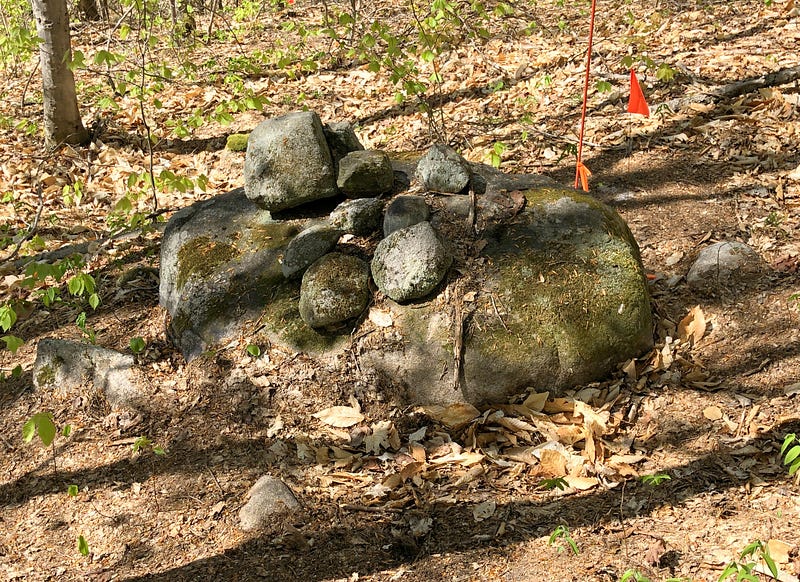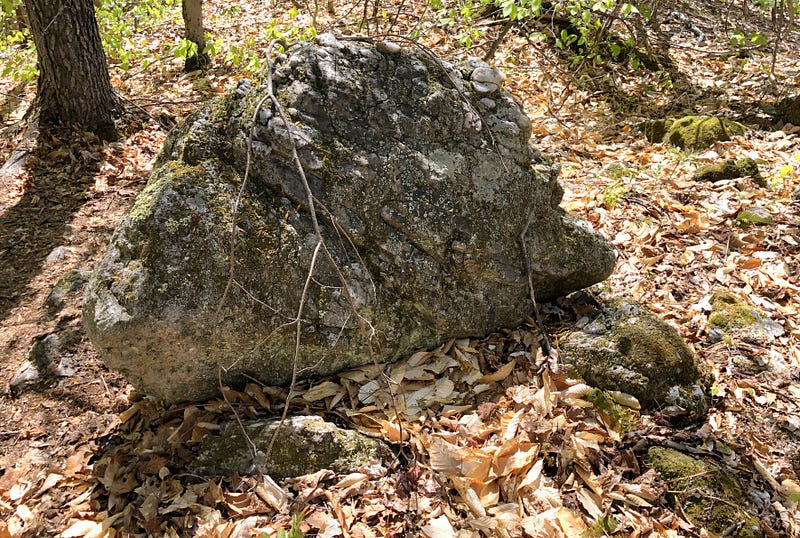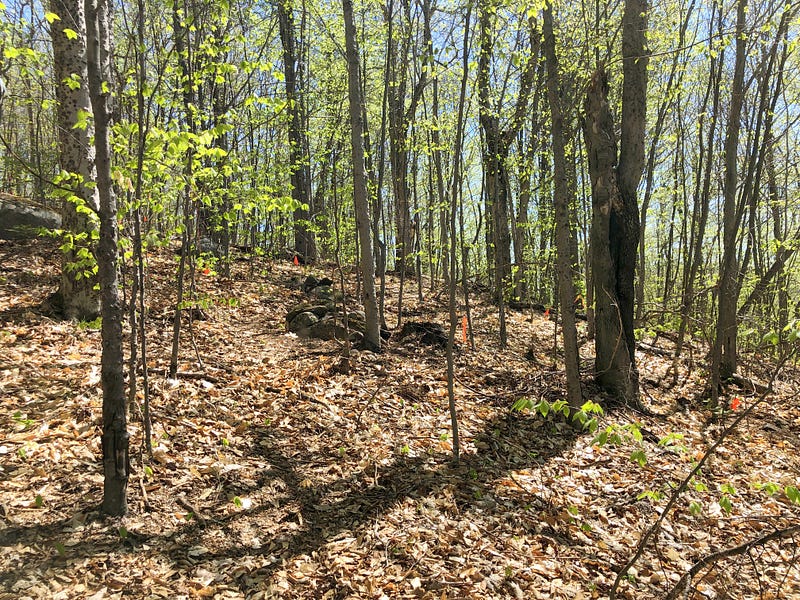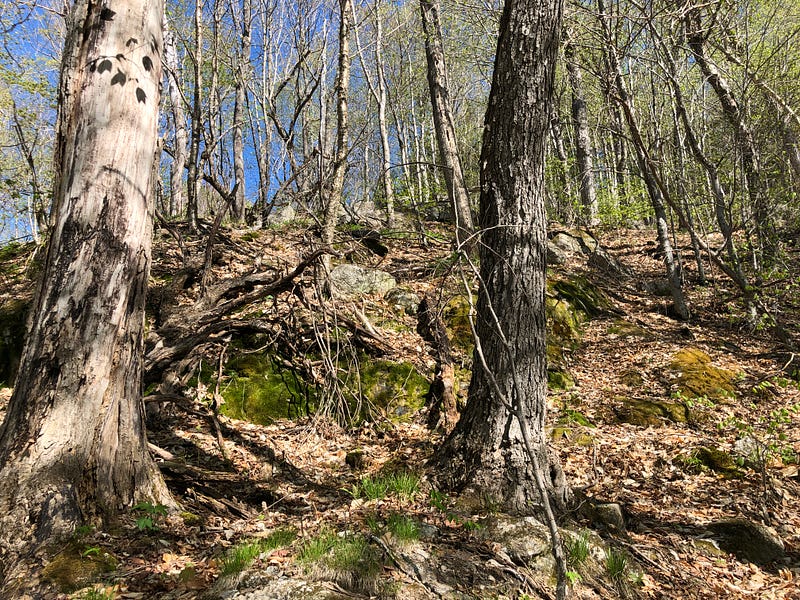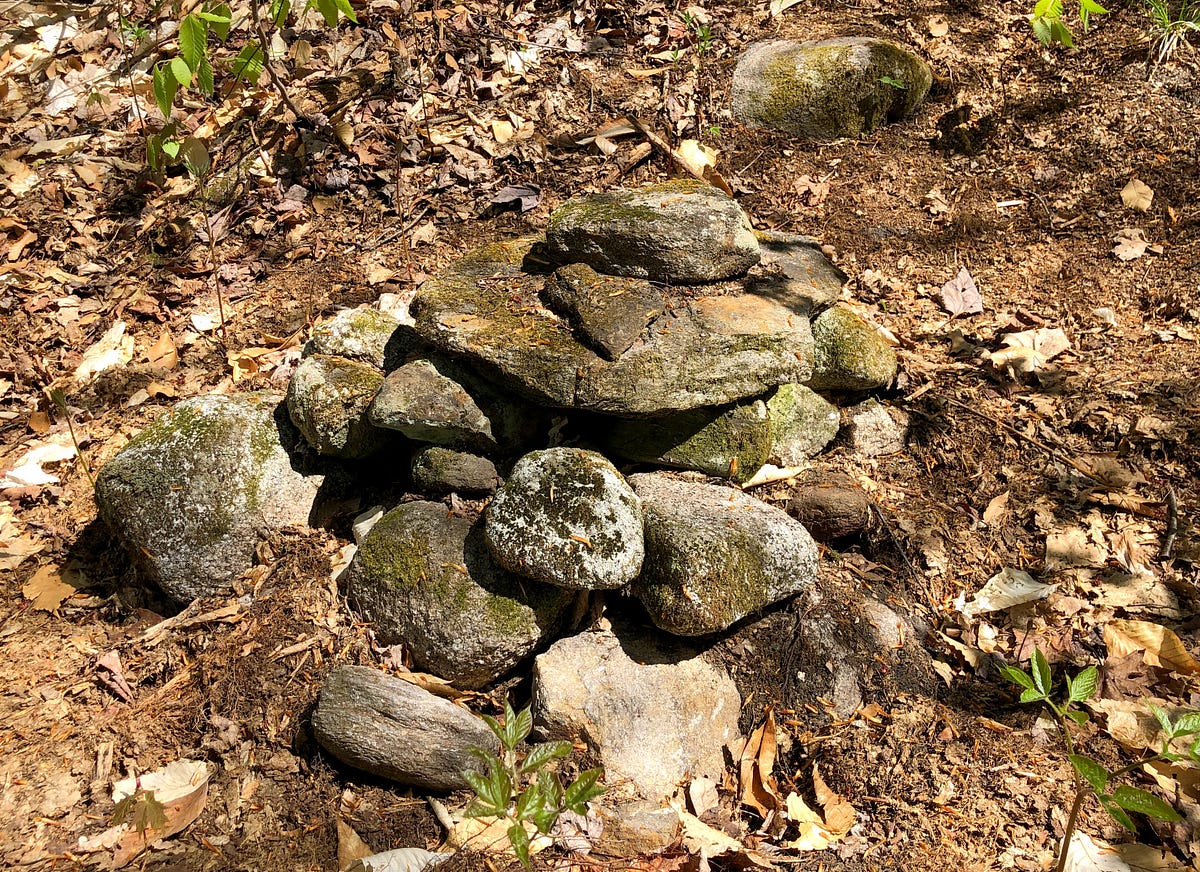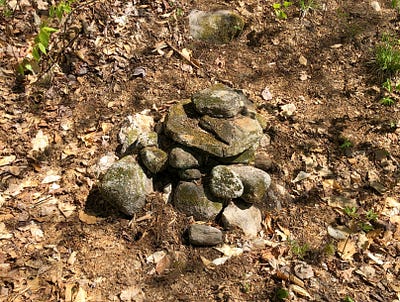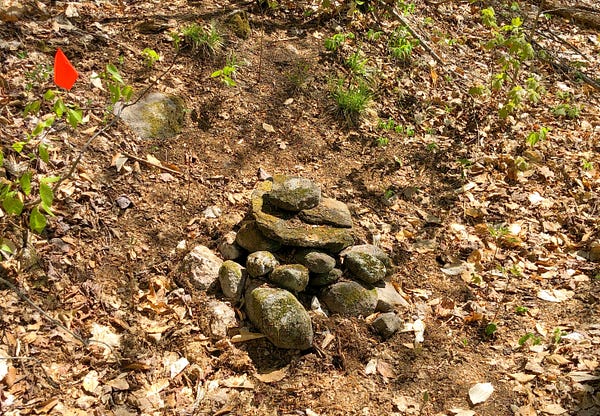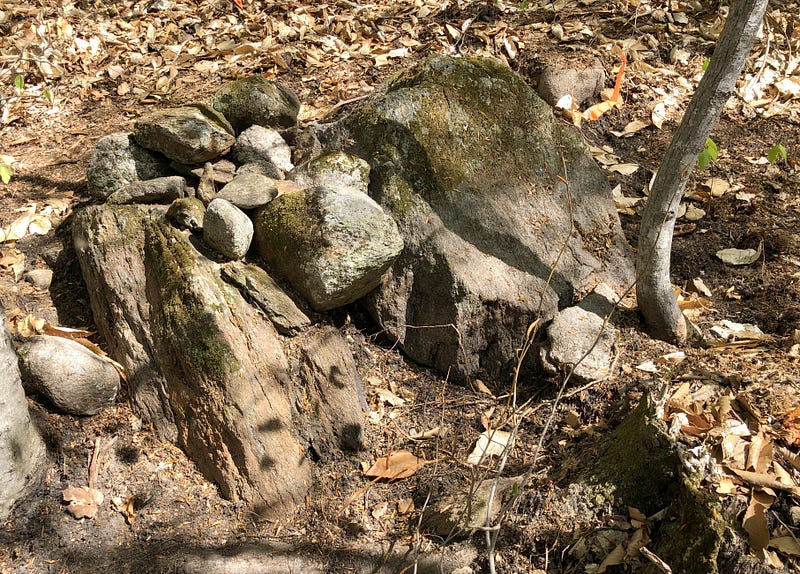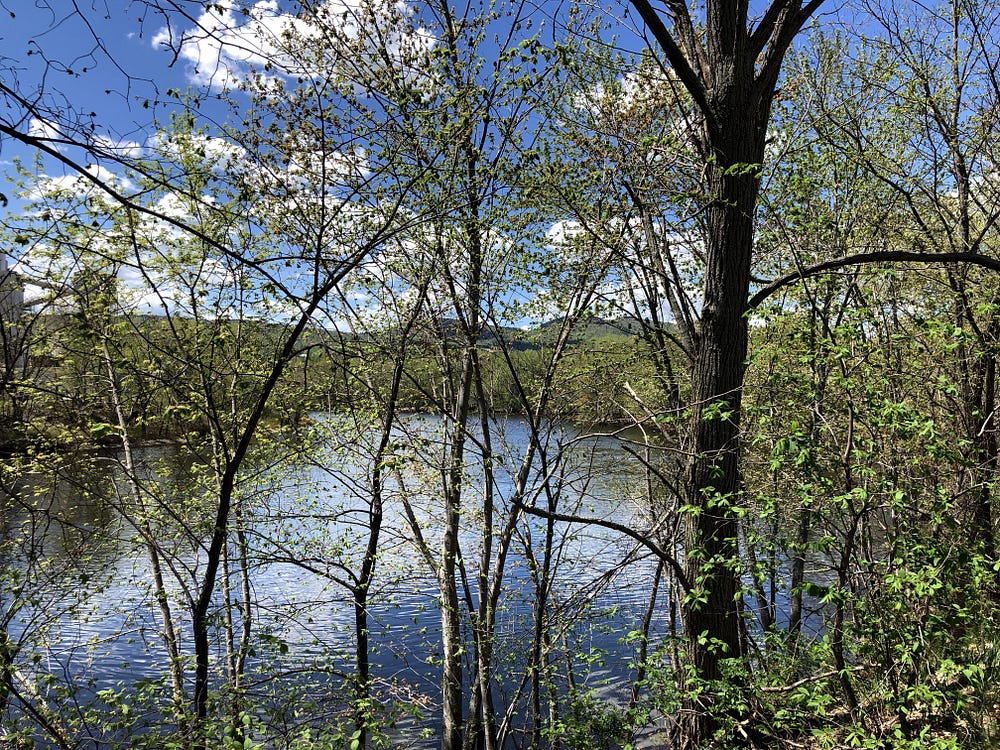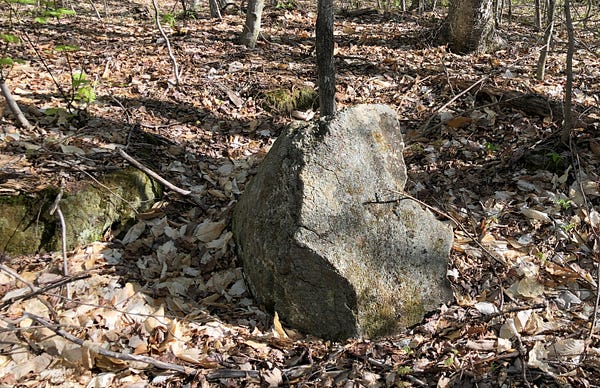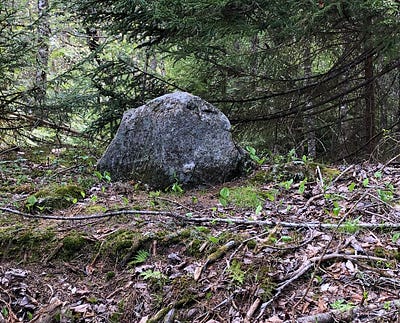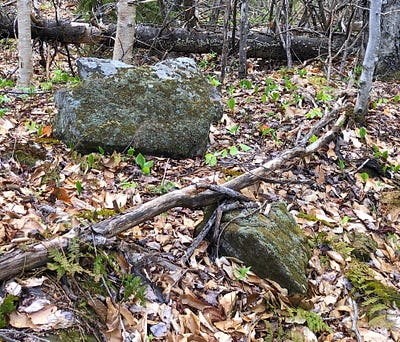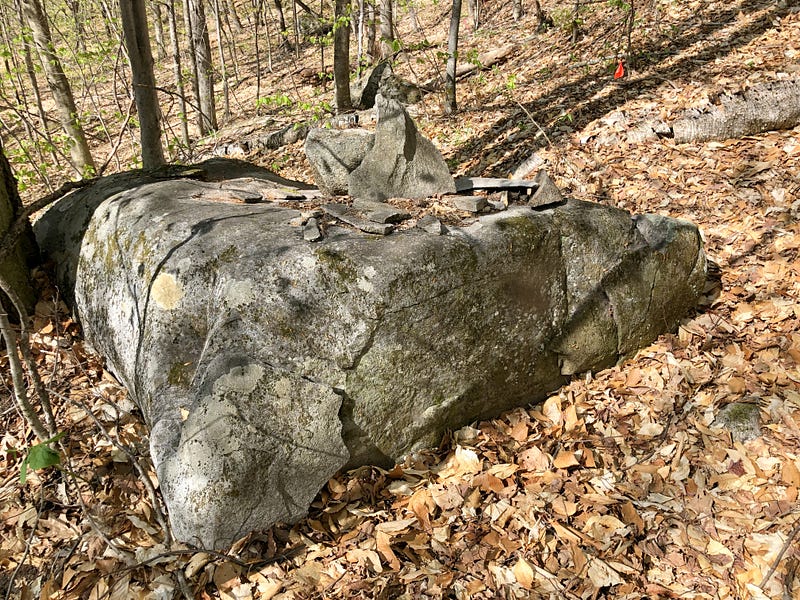Stone Prayers On A Maine Mountainside
First Look At A Recently Discovered Potential Ceremonial Stone Landscape
First Look At A Recently Discovered Potential Ceremonial Stone Landscape
“You’re one of the first people up here!”
As we climbed off the 4-Wheelers we’d ridden up to the site, the landholder let me know just how special my visit was. “Up here” was up, indeed — high up on a southeastern facing mountainside slope in Western Maine, where the landholder discovered odd stone assemblages on their mountain property.
As they sought out explanations for the stonework, they came across my Ancient Stone Mysteries of New England Facebook Group and YouTube video presentations and reached out for more information on what they had been finding. Since then, I’ve been helping them assess the stonework via messages, pictures, and video. And in mid-May 2022, at their invitation, I made a trek to the mountain to see the stonework for myself.
The landholder has also reached out to local and tribal archaeologists and authorities and several seasoned experts on this sort of sacred stonework. Discovering the site’s potential as an Indigenous Ceremonial Stone Landscape has led to a meticulous recovery process. The landholder is now working with these experts to assess the site and carefully expose the stonework, to reveal possible stone prayers covered by centuries of forest duff and dirt. They take their responsibilities as steward of this place very seriously.
It’s an honor to be asked to come visit and tour this newly discovered, potentially sacred space. And a privilege to be able to share some of the first public images of the stonework.
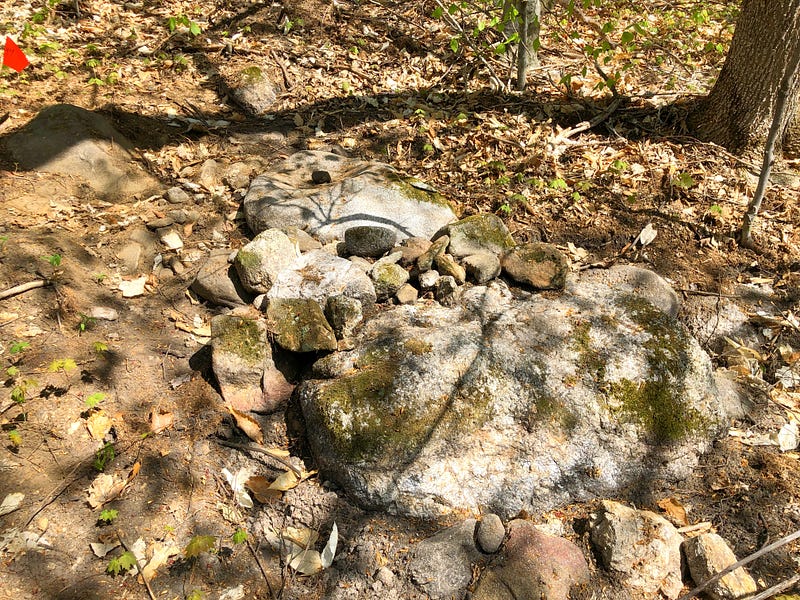
It was also a bit of an adventure! We bounced up miles of gravel and dirt mountain roads to the remote location, traveling in the former domain of the paper company logging skidders that once roamed these slopes, before the land was subdivided and sold in the modern era. The trees of these mountains were harvested for paper. No settlers were building with stone up here.
And yet, there is stonework on this mountain. Likely ancient, Indigenous, sacred stonework. Maine is not known for Indigenous stonework. However, upon finding a site like this one, the question becomes whether or not work like this is actually around but just hasn’t yet been found. Or seen for what it is.
In some ways, it’s stunning the landholder has found this evidence, given how buried in leaves and duff much of the site is. And they keep finding more — over three hundred possible features discovered by the time of my trip, spread out over this mountain slope.
It’s easier to see stonework in the early spring before everything starts growing again and the trees let loose their canopies. Mid-May can still be early enough for visibility at higher elevations, but a sudden hot streak meant new green growth was coming in strong, exploding out all over the mountains on the weekend I visited. I’d made it just in time. Even so, the larger extent of the layout was getting harder to see, although many of the features were flagged and marked.
This site is on private land and not open to the public. The landholder is exploring ways of making it accessible while preserving and protecting it, and hopes to allow more visitors in the future, if feasible.
A Notch Feature, this striking stone assemblage, seems to point the way to the main site. “Notch Feature” isn’t its name, but my shorthand designation for it, as the feature is both located in a mountain notch and has a notch, of sorts, in it.
Amazing to see this still intact! This area hasn’t been disturbed in recent memory. Again, all that’s gone on up on the mountain prior to now is logging, and this notch was too wet to be useful.
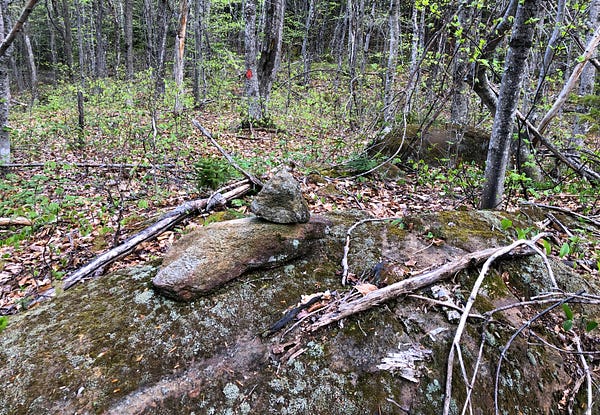
Though on the same mountain as the main site, the notch is on the other side of the summit. If directional, the flat stone an arrow, this could point through the mountain to the site on the other side, the stone on top representing the summit of the mountain above. From here, the accessible route around the summit is in the direction of the small cleft in the top stone — this small split could be directional as well.
Most of the stonework is on a southeasterly-facing slope of the mountain.
The first stone assemblages discovered here were structures of the type Archaeologist Curtiss Hoffman identifies simply as “Rock Piles” in his 2018 study and book Stone Prayers: “…these are piles which are not so well built as cairns, and/or do not rest on the ground surface but are piled on boulders. They can range from simple “rock-on-rock” piles to elaborate constructions consisting of hundred of elements.”
Several possible Split-Filled Boulders were also found.

The landholder has also been uncovering many possible grinding stones and accompanying pestles at the site. Are they all grinding stones? Hard to say for sure, but they do seem to be. Some of these grinding stones still had the pestles sitting on them when the duff was lifted and their surfaces revealed, as if left ready and waiting for the user to return in a short while.
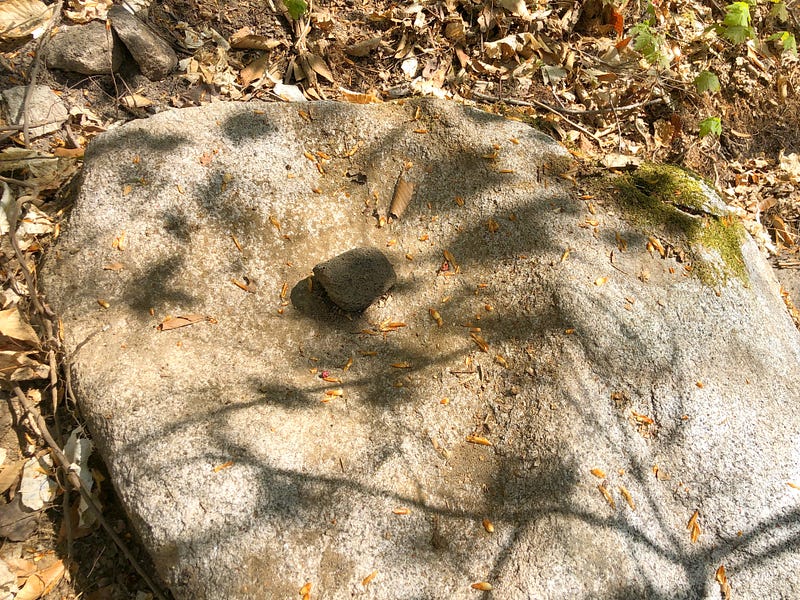
Other pestles are found next to grinding stones, their utility easily judged by their hand-hold and smooth-worn surfaces. Some of the grindstones are incorporated into other stonework, but many sit alone.

The quartz grinding stone and pestle may be ceremonial. They sit a short distance apart from the others.
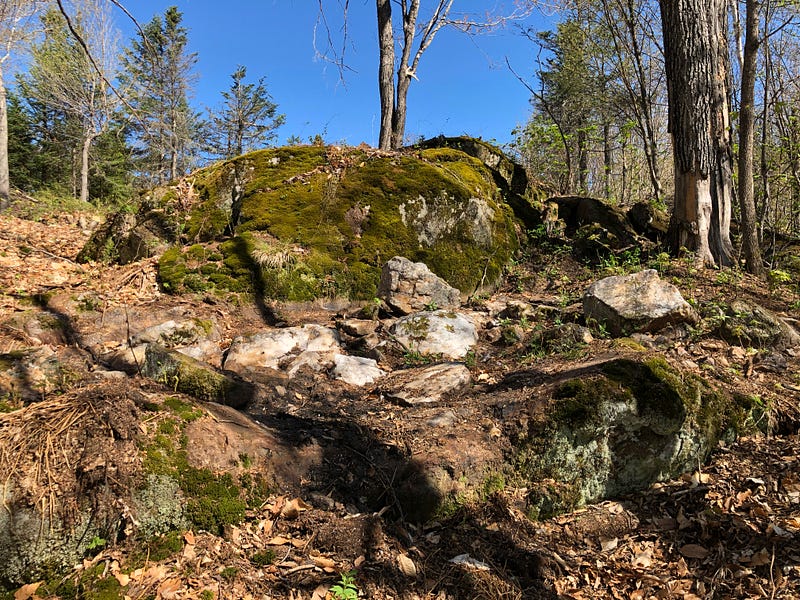
There is a curious stone formation at the top of the mountainside slope. Great chunks of quartz sit atop a sort of stone shelf in front of an outcrop which dominates the ridgeline. This could be a Waterfall Effigy, a possible reconstruction in stone of the major waterfalls in a river in the valley below the mountain.
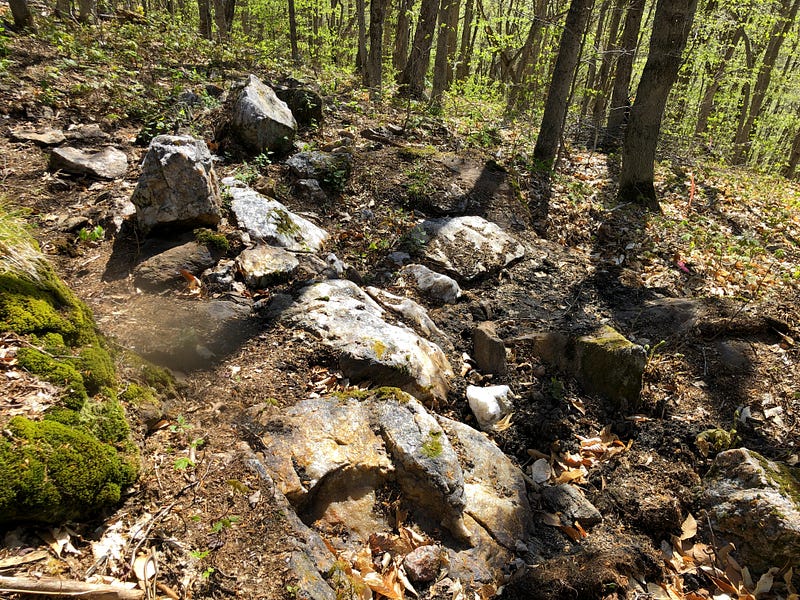
Does the quartz appear here naturally? Some may be part of a natural formation, but there seem to be several pieces added. And many pieces are likely now missing, as this area did see some traffic from treasure hunters and rockhounds in the past, according to the landholder.
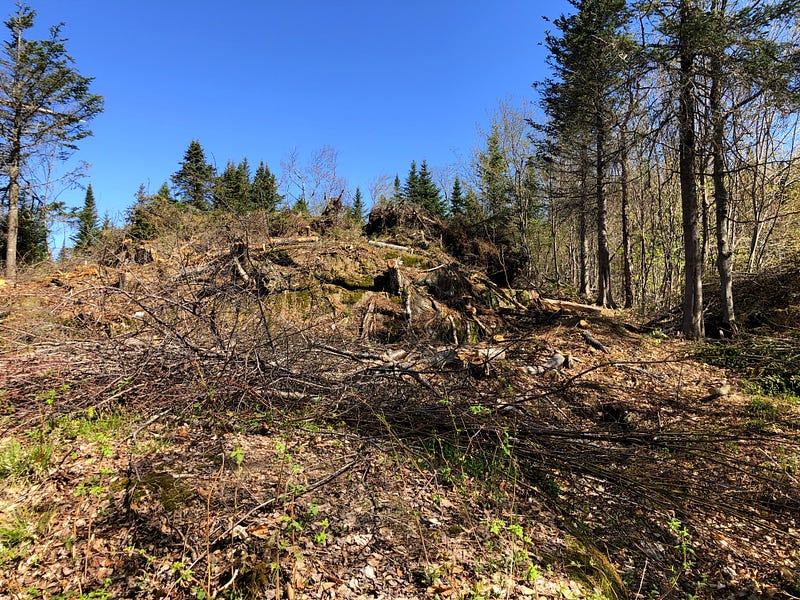
Another huge stone lines up behind the Waterfall Effigy outcrop on the ridge, a colorful orange-and-white-striped stone the landholder dubbed “Magic Rock” quite some time ago, long before any inkling of ancient stonework crossed their mind. It is a rather stunning stone.
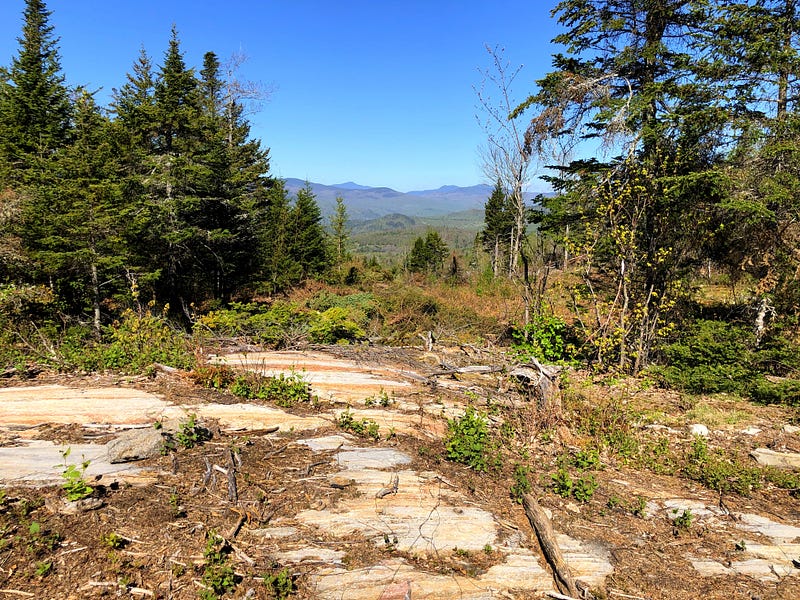
Lined up as these stones and outcrops are, with added stones like the quartz in front and boulders on the sides, they offer a possible re-creation in stone on the heights of the great falls found on the river in the valley to the east of the mountain.
When one descends into the valley and stands in the major bend in that river and looks up to this mountain, it seems the setting equinox sun would hit the mountain at the point where the site lays on the slope. Maybe it would light up the quartz? Maybe they lit up the quartz — there seems to be some evidence of burning on some of the stones of the potential effigy.

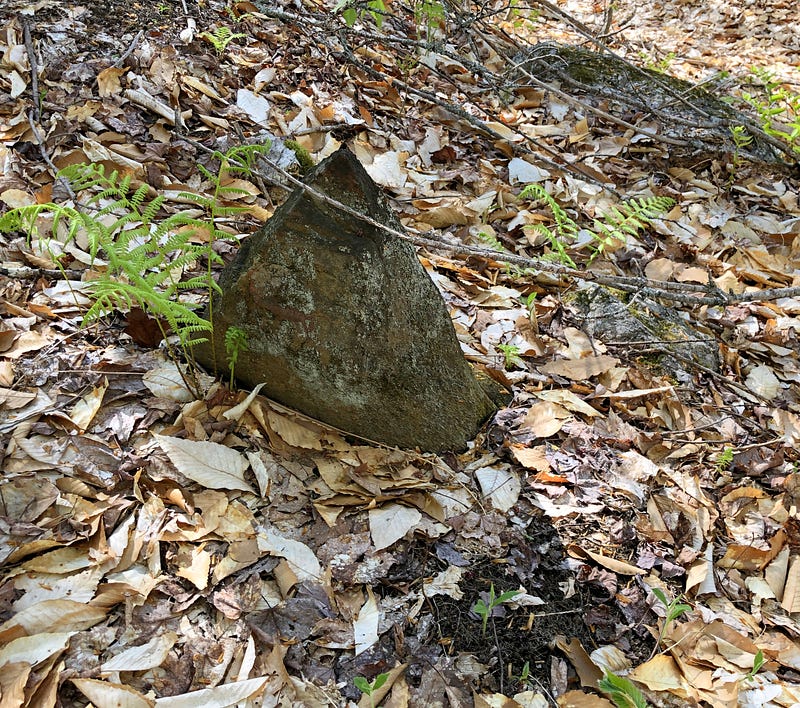
I found a few potential Manitou Stones in our travels, as well as possible Fish, Turtle and other Effigy works. These were spotted in various locations around the mountain, not necessarily exclusively at the main site itself.
It’s still relatively early in the process of discovery and in the assessment of this possibly sacred space, though it does seem to be a Ceremonial Stone Landscape. I treated it as such and went about as if allowed to take pictures and video inside of a church, given the privilege of revealing a potentially holy space. The landholder continues preparing the site for future archaeological research and assessment in consultation with noted experts on the historic preservation of possible Ceremonial Stone Landscapes.
The future here, among these ancient stone mysteries, may have much to tell us about the Indigenous past of the mountains of Western Maine, all New England, and beyond.
Author’s Note: You can see more photos of these features and others in the Ancient Stone Mysteries of New England Facebook Group. I’m currently working on a video of my visit, and will post it to YouTube when finished. You’ll find it on my channel along with my other video presentations.





